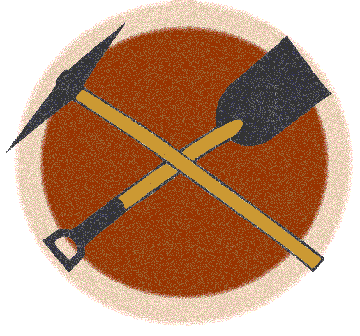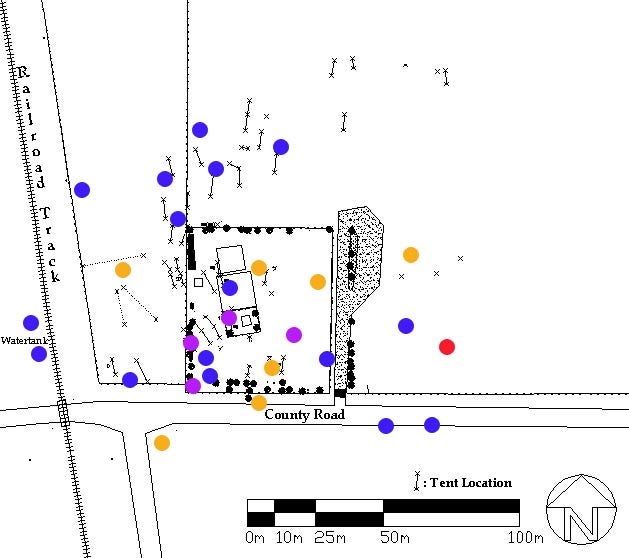The Colorado Coalfield War Archaeological Project
Digital Atlas
Colorado's Southern Coalfields |
|
1913-1914 |
|
With the call of the strike on September 30, 1913, the coal companies evicted many of the strikers and their families from company housing. In preparation for this, the United Mine Workers constructed tent cities across the strike zone. The Ludlow strikers' colony was the largest of these colonies with about 1,200 residents and about 500 tents. It also acted as the union's headquarters during the strike. The colony was in fact a tent city with over 24 different languages spoken in the colony and an intense effort by the union to create an organized and unified community throughout the strike. Union leaders directed the layout of the colony to allow for streets and public areas for striking families. The colony was only temporary and never intended to be a part of the permanent landscape and as such the present landscape is not entirely reflective of the strikers' community. By using the links provided in this base map, you can see how mundane activities and the architecture provided by the tents shaped landscape and the strikers' community. These buttons relate to approximate position of photographers when they took their photographs. Through this layout, a virtual walkthrough of the strikers' colony is created. Included on this base map are the historic references to the colony immediately following the Ludlow Massacre. The effects of the National Guard's destruction of the colony can be seen in comparing the images of the colony before the massacre to the burned ruins left by the events of the massacre.
|
|
|





